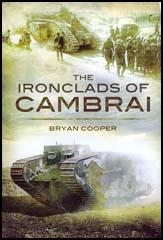Spartacus Review
Volume 43: 28th March, 2010
First World War

Title: Underground War: 1914-1918
Author: Simon Jones
Editor:
Publisher: Pen & Sword
Price: £25.00
Bookshop: Amazon
Spartacus Website: Tunnelling
Category:
Simon Jones’s graphic history of underground warfare during the Great War uses personal reminiscences to convey the danger and suspense of this unconventional form of conflict. He describes how the underground soldiers of the opposing armies engaged in a ruthless fight for supremacy, covers the tunnelling methods they employed, and shows the increasingly lethal tactics they developed during the war in which military mining reached its apotheosis. He concentrates on the struggle for ascendancy by the British tunnelling companies on the Western Front. They outfought their German adversaries underground, and their efforts climaxed with the detonation of nineteen enormous mines beneath the Messines Ridge in June 1917. But this wide- ranging study also tells the story of the little known but fascinating battles fought in the French sectors of the Western Front which have never been described before in English. Vivid personal testimony is combined with a lucid account of the technical challenges – and ever- present perils – of tunnelling in order to give an all-round insight into the extraordinary experience of this underground war. Simon Jones assesses the impact of these underground battles on the fluctuating fortunes of the opposing armies, and he places them in the longer context of military history from medieval times to the present day.

Title: The Ironclads of Cambrai
Author: Bryan Cooper
Editor:
Publisher: Pen & Sword
Price: £19.19
Bookshop: Amazon
Spartacus Website: Cambrai
Category:
When tanks, the newly invented British weapon, were used for the first time in a mass attack on November 20 1917, they not only achieved one of the most remarkable successes of the First World War but set the pattern for the future of mechanised warfare. For the first time in three years of bloody trench warfare, epitomised by the slaughter at Passchendaele which was then reaching its climax, tanks brought about a breakthrough of the massive German defence system of the Hindenburg Line, followed up by British infantry and cavalry divisions. They were supported for the first time by low flying fighter aircraft of the Royal Flying Corps. The initial victory at Cambrai brought cheering crowds into the streets of London and the ringing of church bells in celebration. In seemed possible that the success might bring about the final defeat of Germany. But the British High Command failed to exploit the success. Generals who still dreamt of massive cavalry charges had not had much faith in this strange new weapon that had been brought to them – funded initially by the Royal Navy at the behest of Winston Churchill who was then First Lord of the Admiralty and did see its value. The High Command did not really believe the breakthrough was possible and tragically miscalculated the necessary steps to follow it up. Within days the Germans counter-attacked and regained much of the ground that the British had won. What could have been the final victory was delayed for another year.
